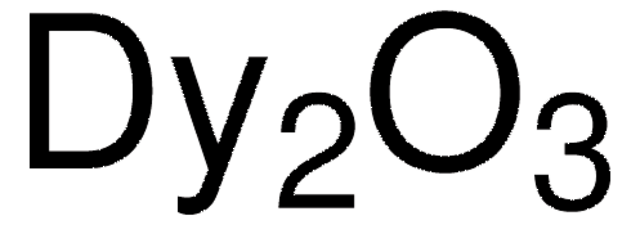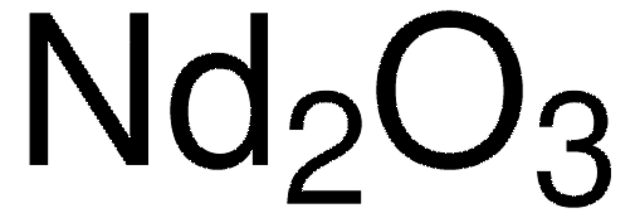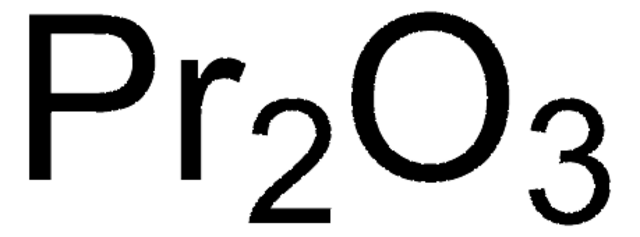203297
Gadolinium(III) oxide
powder, ≥99.99% trace metals basis
About This Item
Recommended Products
Assay
≥99.99% trace metals basis
form
powder
reaction suitability
reagent type: catalyst
core: gadolinium
mp
2330 °C (lit.)
density
7.407 g/mL at 20 °C (lit.)
SMILES string
O=[Gd]O[Gd]=O
InChI
1S/2Gd.3O
InChI key
RNYFGGMJZRTZKO-UHFFFAOYSA-N
Looking for similar products? Visit Product Comparison Guide
Related Categories
Signal Word
Warning
Hazard Statements
Precautionary Statements
Hazard Classifications
Eye Irrit. 2
Storage Class Code
11 - Combustible Solids
WGK
WGK 1
Flash Point(F)
Not applicable
Flash Point(C)
Not applicable
Personal Protective Equipment
Choose from one of the most recent versions:
Already Own This Product?
Find documentation for the products that you have recently purchased in the Document Library.
Customers Also Viewed
Articles
Rechargeable solid-state batteries are becoming increasingly important due to wide-spread use in computers, portable electronics, and vehicular applications.
Our team of scientists has experience in all areas of research including Life Science, Material Science, Chemical Synthesis, Chromatography, Analytical and many others.
Contact Technical Service











